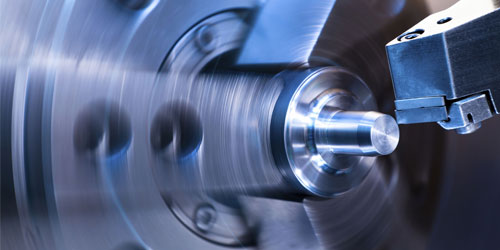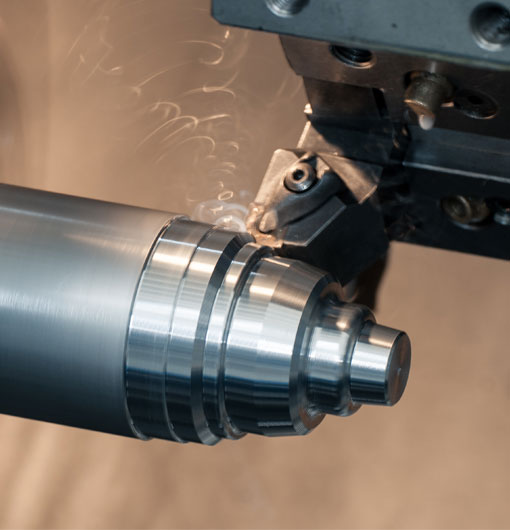As the world of manufacturing continues to evolve, the significance of brass CNC turning has increased significantly. This impressive process has managed to change the way brass components are designed, produced, and used across an array of industries. For anyone striving to become a pro at brass CNC turning or those aiming to enhance their knowledge in this domain, this comprehensive guide is the perfect resource.
Introduction to Brass CNC Turning
Brass is an alloy composed of copper and zinc, offering reliability, excellent thermal conductivity, and a high degree of workability. These properties make brass a popular choice in industries such as aerospace, automotive, electronics, and marine engineering. With the advent of CNC (Computer Numerical Control) machines, turning brass components has become increasingly accessible, accurate, and efficient.
In brass CNC turning, a lathe removes material from a rotating workpiece to create parts with the desired shape and size. Computer-guided machines perform this operation with extreme precision, allowing for intricate designs and tight tolerances. This article delves into the world of brass CNC turning, providing essential tips and insights to help you get started.
Benefits of Brass CNC Turning
1. High Precision: CNC machines offer remarkable precision, generating brass components with intricate details and incredibly close tolerances. This high level of accuracy makes brass CNC turning an attractive option for industries requiring exact dimensions and detail.
2. Speed and Efficiency: Automating the process of brass turning not only increases productivity, but also ensures a consistent rate of component production, making it ideal for both one-offs and large-scale manufacturing projects.
3. Reduced Material Wastage: CNC-controlled machines minimize waste by optimizing the use of raw materials, subsequently reducing costs and promoting sustainable production practices.
4. Flexibility: One of the most significant advantages of brass CNC turning is the ability to adapt to specific project requirements, be it unique designs or complex geometries. This flexibility allows for customization and optimization of the final product.
5. Low Labor Costs: As CNC machines are automated and require fewer operators to run them, this process significantly reduces labor costs, making it an economical option for businesses and hobbyists alike.
Choosing the Right Brass Alloy for CNC Turning
Selecting the appropriate brass alloy is crucial for successful CNC turning. Various brass alloys exhibit different characteristics, influencing aspects such as machinability, strength, and corrosion resistance. Some common brass alloys used in CNC turning include:
1. C36000: This type of brass is known for its excellent machinability, making it a popular choice for CNC turning. C36000 is often used for valves, fittings, and fasteners in automotive and marine applications.
2. C37700: Also recognized for its outstanding machinability, C37700 offers good corrosion resistance and is commonly employed in faucet components, valve stems, and hardware parts.
3. C46400: Exhibiting exceptional corrosion resistance, C46400 is commonly known as naval brass due to its prevalent use in marine hardware, fasteners, and propeller shafts.
4. C38500: This alloy boasts high strength and appealing aesthetic properties, making it suitable for architectural and decorative applications, such as handrails, door handles, and window fittings.
When deciding on the right brass alloy for your project, consider factors such as desired mechanical properties, appearance, and performance requirements to ensure optimal results.
Brass CNC Turning Tools and Techniques
Various cutting tools and techniques are employed in brass CNC turning, each serving a specific purpose or aim:
1. Turning: Simply removing material from the outer diameter of the workpiece, this operation shapes the exterior of the component.
2. Facing: This operation involves cutting the end of the workpiece to achieve the required length and a smooth, flat surface.
3. Boring: Employed to enlarge an existing hole in the workpiece, boring refines the hole's size and improves its axial alignment.
4. Grooving: This technique involves creating a recess or groove on the workpiece, either along its outer diameter or in a through-hole.
5. Parting: Using a slender cutting tool, parting separates the finished component from the remaining raw material.
6. Threading: To create screw threads on the exterior or interior of the workpiece, threading tools and techniques are implemented, either via single-point threading or thread milling.
Optimizing Brass CNC Turning
To maximize efficiency and effectiveness in brass CNC turning, a few key factors must be considered:
1. Tool Selection: Select suitable tool material and geometry for the specific brass alloy you're working with. Carbide, high-speed steel (HSS), and polycrystalline diamond (PCD) tools are all viable options, but each offers distinct advantages and disadvantages.
2. Cutting Parameters: Optimize cutting speed, feed rate, and depth of cut to ensure smooth, efficient removal of material while avoiding tool deflection or chattering.
3. Coolant Usage: Brass is a self-lubricating material, meaning that the use of a coolant may be unnecessary; however, always assess the specific project requirements before omitting coolants entirely.
4. Workholding: Secure the workpiece appropriately to avoid shifting during the turning process, ensuring that you maintain consistent accuracy and safety throughout the project.
5. Routine Maintenance: Regularly check and maintain the CNC lathe, tools, and accessories to prolong the lifespan of your equipment and maintain optimal performance.
By following this comprehensive guide, you are now well-equipped to embark on your journey into the exciting world of brass CNC turning. As you continue to refine your skills and gain experience, you will surely discover the boundless potential that this technology offers in the realm of precision component manufacturing.
brass cnc turning free sample













